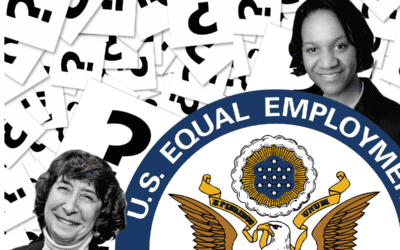
- Minimum FTE Headcounts?
- Threshold Number of Employees Needed for Federal Laws?
- Minimum Thresholds for Federal Employment Laws?
- When Do Certain Employment Laws Apply?
I’m guessing that the above are common phrases that at some point you typed into your search engine to determine whether certain federal laws apply to your business. The number of employees working at your business is a key factor, often overlooked, when understanding federal labor laws. It is especially important for smaller companies, those with fluctuating workforces, and those just on the cusp of having a new compliance obligation if they hire one or two more people.
This overview provides a general guide to understanding if/when key federal labor laws<a id=”footnote1-ref” href=”#footnote1″><sup>*</sup></a> apply to your business so you can always be compliant.
National Labor Relations Act (NLRA) – 2
An employer must have a minimum of two employees and meet the test for engagement in interstate commerce for the National Labor Relations Board to have jurisdiction.
Title VII of the Civil Rights Act – 15
Title VII prohibits employers from discriminating in the workplace based on race, color, religion, sex or national origin.
Americans with Disabilities Act (ADA) – 15
The ADA prohibits employers from discriminating against qualified individuals with disabilities in all employment practices, such as recruitment, compensation, hiring and firing, job assignments, training, leave and benefits.
Pregnancy Discrimination Act (PDA) – 15
The PDA prohibits workplace discrimination based on pregnancy, childbirth or related medical conditions.
Age Discrimination in Employment Act (ADEA) – 20
The ADEA prohibits employers from discriminating against employees or applicants for employment who are age 40 or older.
Consolidated Omnibus Budget Reconciliation Act (COBRA) –20
COBRA requires employer-sponsored group health plans to offer continuation coverage to eligible employees and their dependents when coverage would otherwise be lost due to certain events (e.g., employee layoffs).
Family Medical Leave Act (FMLA) – 50
The FMLA requires employers to provide eligible employees with unpaid, job-protected leave for specified family and personal medical reasons for up to 12 weeks.
Affirmative Action Program (AAP) – 100
Employers must develop an Affirmative Action Program (AAP) if they employ 50 or more persons and have at least one contract of $50,000 or more, under Executive Order 11246 and Section 503 of the Rehabilitation Act of 1973.
Employer Information Report (EEO-1) – 100
The Employer Information Report EEO-1 (commonly known as the EEO-1 Report) requires employers with 100 employees to submit employment data categorized by race/ethnicity, gender, job category, and wages and hours to the Equal Employment Opportunity Commission annually.
Worker Adjustment and Retraining Notification Act (WARN) – 100
Employers with 100 or more employees are required to provide 60 days advance notice to employees of upcoming plant closings and/or mass layoffs.
The following federal laws have no minimum employee threshold. In other words, if you run a business, you must abide by them:
Fair Labor Standards Act (FLSA)
The FLSA establishes minimum wage, overtime, record keeping and child labor standards for employers.
Equal Pay Act (EPA)
Employers must provide equal compensation to men and women who perform equal work within the same workplace.
Immigration Reform and Control Act (IRCA)
Employers are prohibited from hiring and retaining employees who are not authorized to work in the United States. Employers and employees must complete the Form I-9 and employers must retain the form for each person hired.
Occupational Safety and Health Act (OSHA)
OSHA requires employers to provide a safe workplace for employees. The law sets and enforces protective workplace safety and health standards.
Uniformed Services Employment and Reemployment Rights Act(USERRA)
USERRA prohibits discrimination against individuals on the basis of membership in the uniformed services with regard to any aspect of employment.
<div id=”footnote1″ style=” color: var(–midnight-blue); text-align: justify; margin-top: 12px; font-family: Arial, Helvetica Neue, Helvetica, sans-serif; font-size: 17px; line-height: 26px;”>*Most states have their own labor and employment laws, with lower employee minimums. <a href=”#footnote1-ref” aria-label=”Return to footnote 1 referring content.”> ↵ </a></div>









